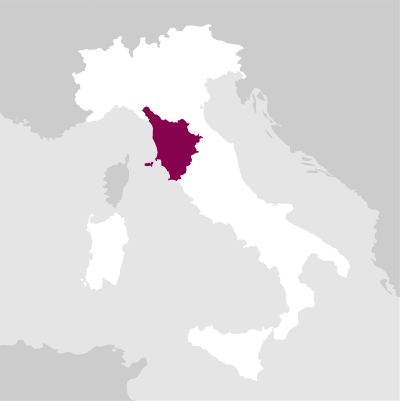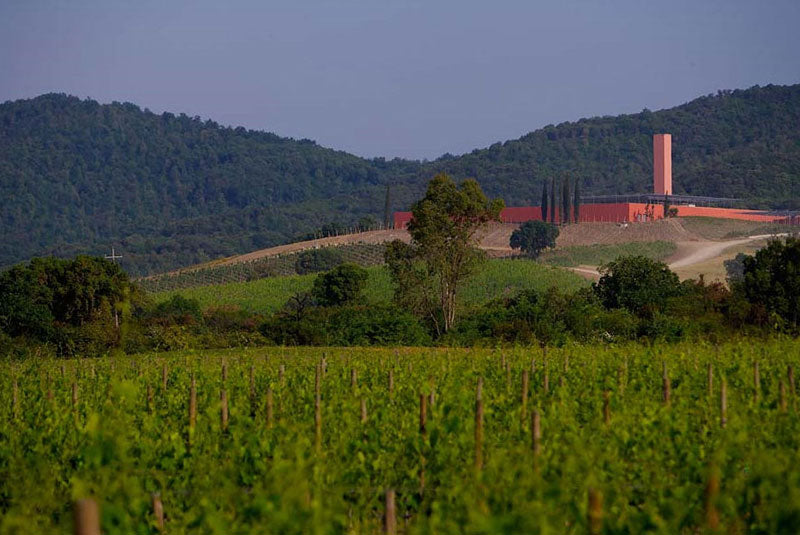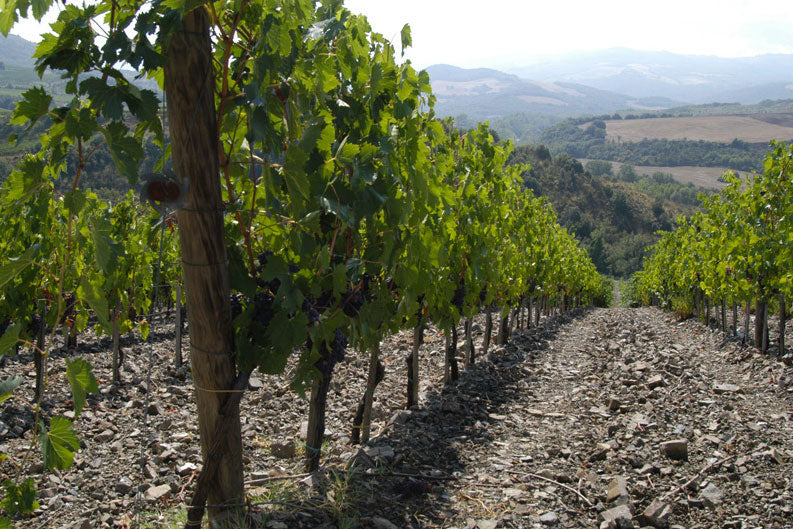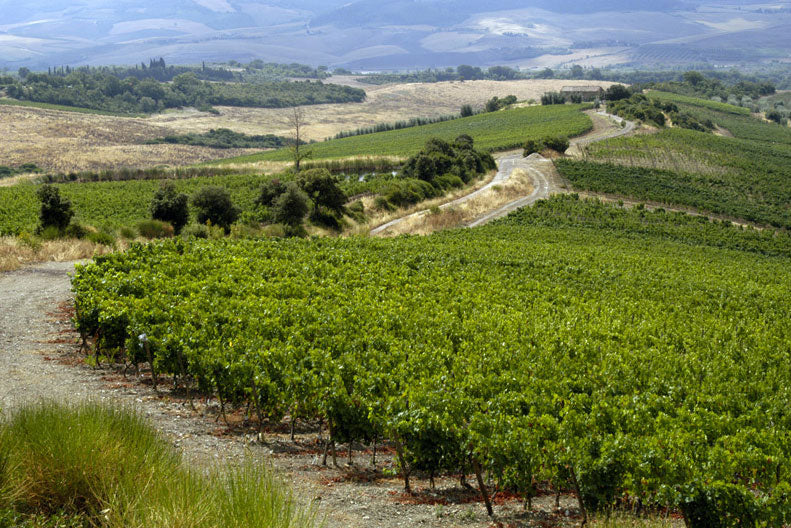Tuscany undoubtedly represents one of the pillars of Italian wine production from the point of view of both internationally renowned quality and the presence of producers who have created wines of undisputed charm. Vine cultivation has very ancient origins: from the 7th century BC. The Etruscans favoured its development. It was then the Greeks who started a real trade in Tuscan wines. The collapse of theRoman Empire led to the decline of this production, which returned to prominence in the Middle Ages, and from 1300 onwards it was closely linked to noble Tuscan families who still represent milestones in the history of Tuscan wines such as Frescobaldi and Antinori. Most of the wine production concerns red grapes from which excellent red wines are made: undoubtedly the main grape variety is Sangiovese, followed by Canaiolo nero. While, as far as white grapes are concerned, the following stand out: vernaccia di San Gimignano combined with trebbiano toscano, vermentino, malvasia bianca and chardonnay. This region boasts 11 Denominazioni di Origine Controllata e Garantita (DOCG) and no less than 37 Denominazioni di Origine Controllata (DOC), and it should also be noted that outside these denominations, numerous Tuscan wines are recognised and awarded worldwide. Among the most important wine-growing areas are Chianti between Florence and Siena, with the production of the Tuscan red wine of the same name Montalcino, a village in the province of Siena, and Bolgheri, a hamlet in the municipality of Castagneto Carducci. Other important wine areas are: Tuscan Maremma with numerous DOCs such as Montecucco and Morellino di Scansano and Val d'Orcia between Montalcino and Montepulciano with the DOC Orcia. xtraWine has carefully selected the best Tuscan wines, proposing only bottles that have been awarded numerous prizes by Bibenda, Gambero Rosso, Veronelli and AIS. You can choose from a list of Tuscan wines from the best vintages, all from the most important wineries such as: Antinori, Marchesi Frescobaldi, Domini Castellari Castellina, Tenute Folonari and Felsina.
Wines of Tuscany: The best Tuscan wines on sale
An error occurred while loading the products.
Reload the products
Reload the products
No products found
Use fewer filters or remove all
Use fewer filters or remove all

Tuscany
Tuscany
| Country name | Italy |
| History | The area between the Arno and the Tiber was the territory of the Etruscans or Tuschi in the pre-Roman era. The name of the Region in those times was Etruria or Tuscia. Subsequently, from Tuscia the name of Tuscany was formed. With the decline of the Empire, there was an apparent abandonment of the Tuscan vineyards, but the recovery, facilitated by the monastic orders, had already begun in the early Middle Ages, as evidenced by documents from the Badia a Coltibuono, very active around the 9th century, in which the culture of life is spoken about in detail. A clear recovery of viticulture had therefore begun around the year 1100 AD, when the vineyards began to grow denser, even in the centre of Florence, where the church of S. Maria delle Vigne already stood. That church is now known as Santa Maria Novella. |
| Perc hill | 25 |
| Perc mountain | 8 |
| Perc plain | 67 |
| Perc red grape | 70 |
| Perc white grape | 30 |
| Soil and climate | The climate is generally mild, especially in the coastal strip, which is often beaten by the 'Scirocco', a hot humid wind from Africa, causing frequent rainfall. The Apennine chains protect the region from the cold winds that blow from the North East. |
| Surface area | 22990 |
| Typical dishes | Among the most tasty first courses are pappardelle with hare and the pheasant broth served with croutons fried in butter, 'pasticcio alla fiorentina' and the 'Lunigiana-style rice bomb', which comes from Emilia. There are also numerous second courses, on which the Florentine steak stands on, rib steak cut high, well cooked on the outside but rosy or bloody inside, sometimes served as a cut. Veal stew is tasty with oil, garlic and rosemary, as well as the 'stagnotto alla fiorentina,' a piece of slowly cooked beef with aromatic herbs, tomato and wine, and the 'peposo', a beef stew overcooked in wine, tomato, aromatic herbs and plenty of black pepper. The most representative dessert of Tuscany and widespread nationwide is the panforte, prepared with flour, sugar, almonds and an abundance of candied fruit, a rich and worthy complement to the meal of a day of celebration, surrounded by delicious ricciarelli. |
| Typical products | In Tuscany there are 6 DOCG: Brunello di Montalcino, Carmignano, Chianti, Chianti Classico, Vernaccia di San Gimignano and Vino Nobile di Montepulciano, and in addition, a large number of DOC, IGT and VdT. The region is a wine district with a very ancient history: the interest in wines in straw-wrapped flasks began to spread in the Renaissance period and the powerful merchants of Florence always offered their guests Chianti wines, in the famous fiasco. |



